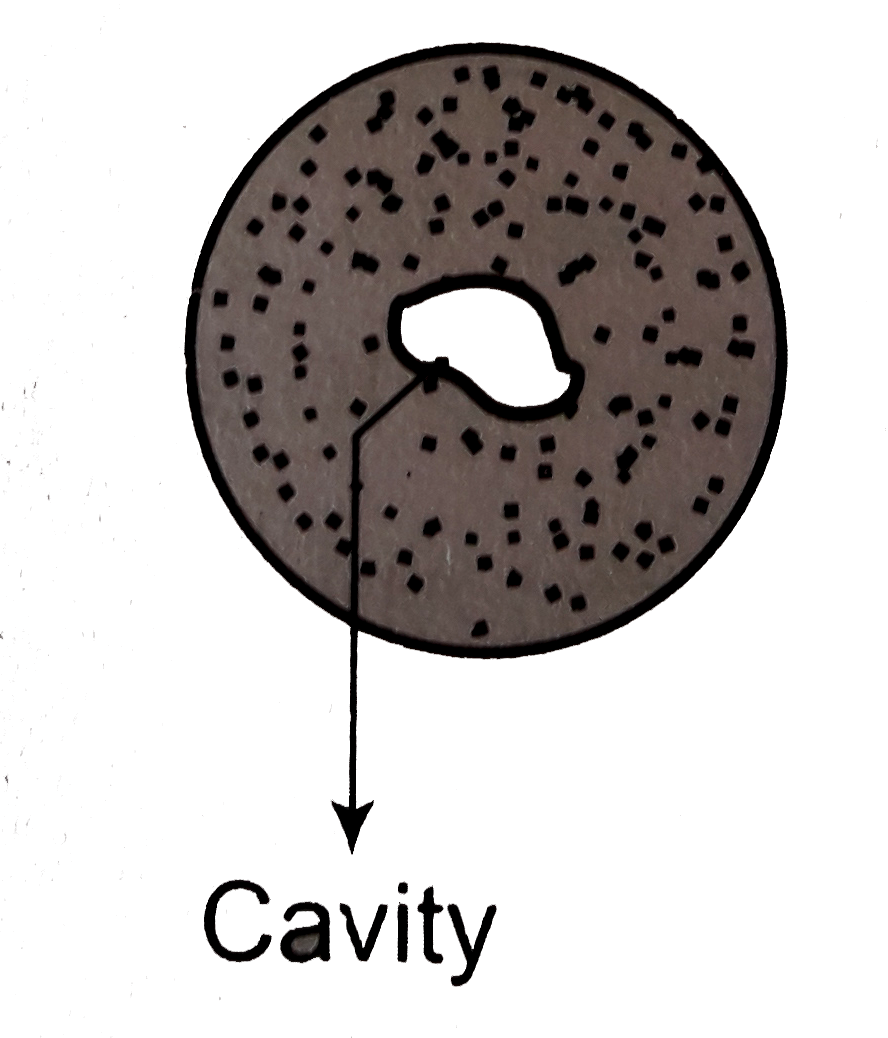(a) An ornament weighting 36g in air, weights only 34g in water. Assuming that some copper is mixed with gold to prepare the ornament, find the amount of copper in it. Specific gravity of gold is 19.3 and that of copper is 8.9.
(b) Refer to the previous problem. Suppose, the goldsmith argues that he has not mixed copper or any other material with gold, rather some cavities might have been left inside the ornament. Calculate the volume of the cavities left that will allow the weights given in that problem.
(a) Loss of weight in water =36g−34g=2g
Loss of weight =ρωVg=2g ltbrlt ρωV=2
V=2cm3(∵ρω=1g/cc)
Let m : mass of copper, (36−m) : mass of gold
V=Vg+Vc=36−mρg+mρc
2=36−m19.3+m8.9
m=2.2g
(ii) V=Vg+V'C
V'C : volume of cavity
2=3619.3+V'C
V'C=0.135cm3.


Topper's Solved these Questions
Similar Questions
An ornament weighting 36 gin air, weighs ony 34 g in water. Assuming that some copper is mixed wilth godl to prepare the ornament, find the amount of coper in it. Specific gravity of godl is 19.3 and that of copper is 8.9.
View SolutionRefer to the previous problem. Suppose, the goldsmith argues that he has not mixed copper or any other material with gold, rather some cavities might have been left inside the ornament. Calcuate the weighs given in that problem.
View Solution
Knowledge Check
An ornament weighing 36g in air weighs only 34g in water. Assuming that some copper is mixed with gold to prepare the ornament, find the amount of copper in it. Specific gravity of gold is 19.3 and that of copper is 8.9
A2.2gB4.4gC1.1gD3.6gAn ornament weighing 50g in air weighs only 46g in water. Assuming that some copper is mixed with gold to prepare the ornament, find the amount of copper in it. Specific gravity of gold is 20 and that of copper is 10.
A20gB10gC30gD40gCopper is mixed with gold to make ornaments because alloying
Aincreases the hardness of goldBincreases the malleability of goldCmakes gold a very good conductor of heatDdecreases its fusibility
A necklace weighs 50g in air, but it weighs 46g in water. Assume that copper is mixed with gold to prepare the necklace. Find how much copper is present in it. (Specific gravity of gold is 20 and that of copper is 10.)
View SolutionA necless weighing 50 g in air, but it weight 46 g in water. Assume copper is mixed with gold to prepare the neckless. Find how much copper is present in it. (Specific gravity of gold is 20 and that of copper is 10 )
View SolutionIn previous problem if the piece is made of pure gold with some air cavities In it. Calculate the volume of the cavities left that will allow the weights given in that problem.
View SolutionCopper is mixed with gold to make ornaments because alloying
View SolutionIn an ornament the ratio of gold and copper is 3:2. The percentage of gold in the ornament is :
View Solution
